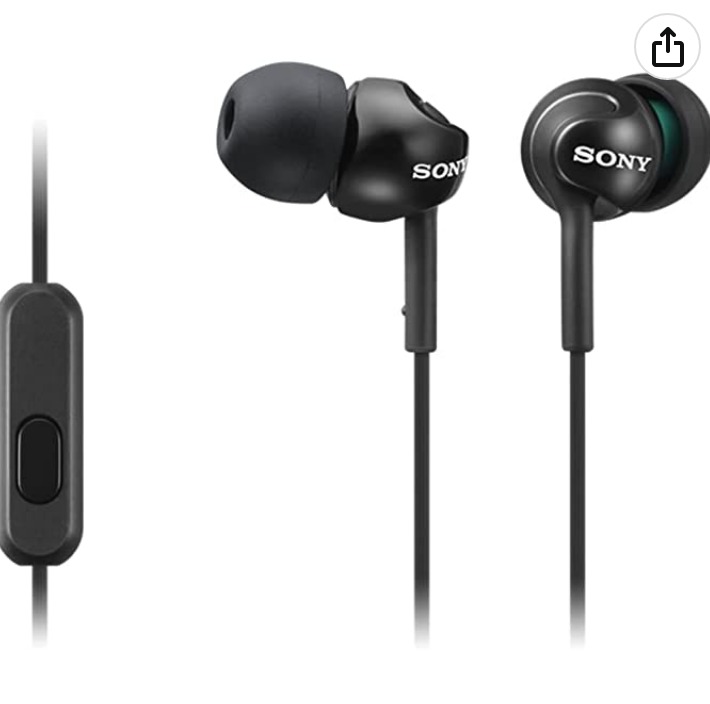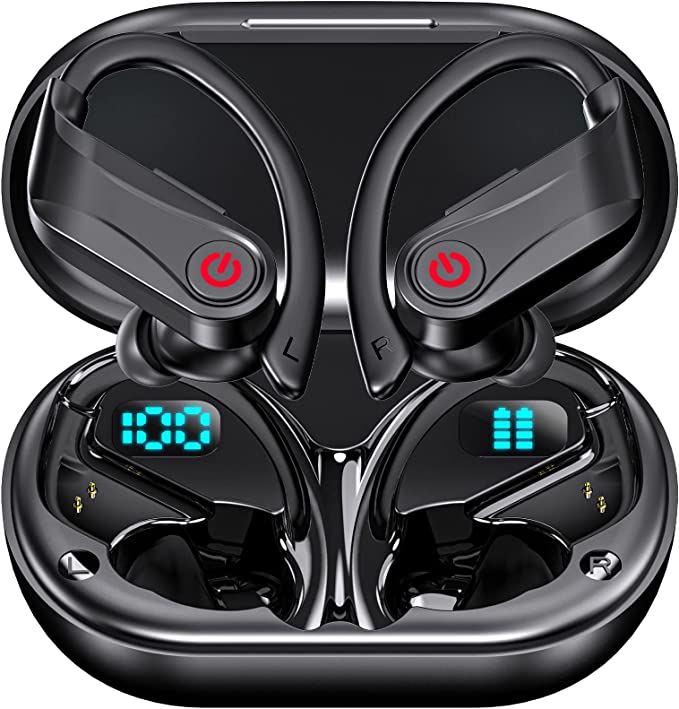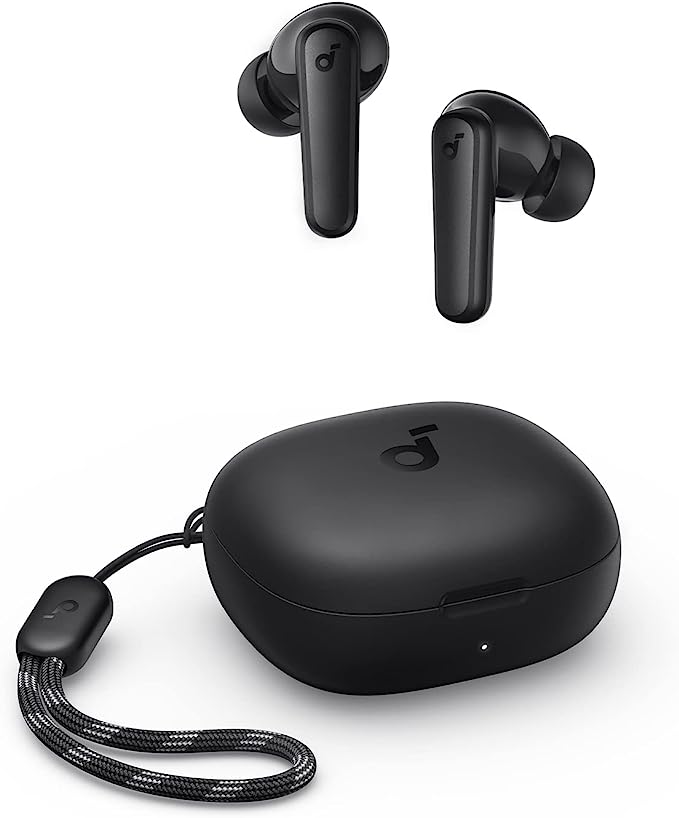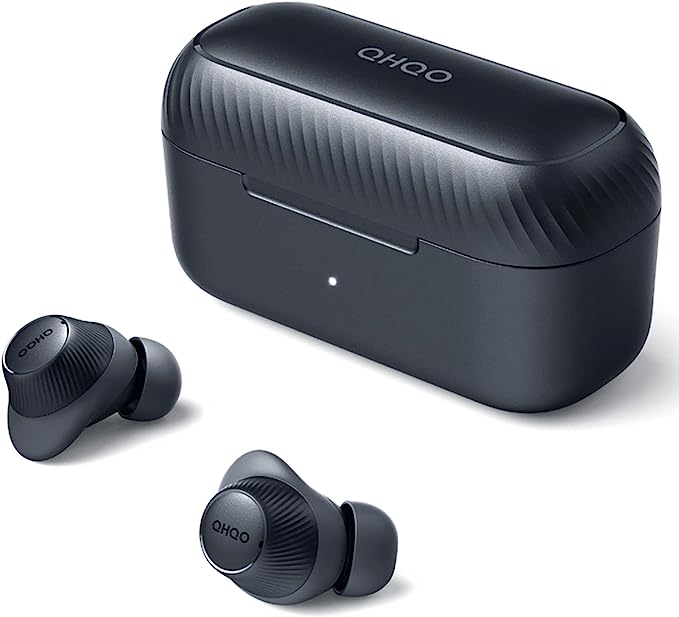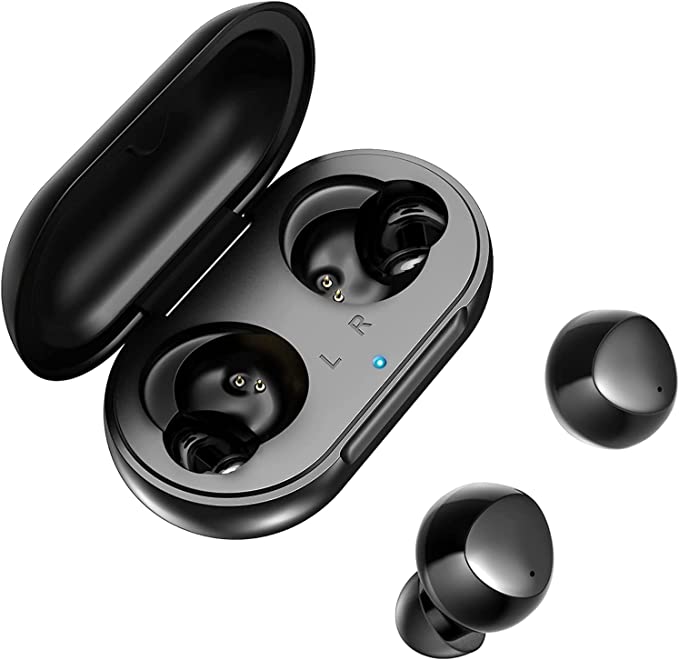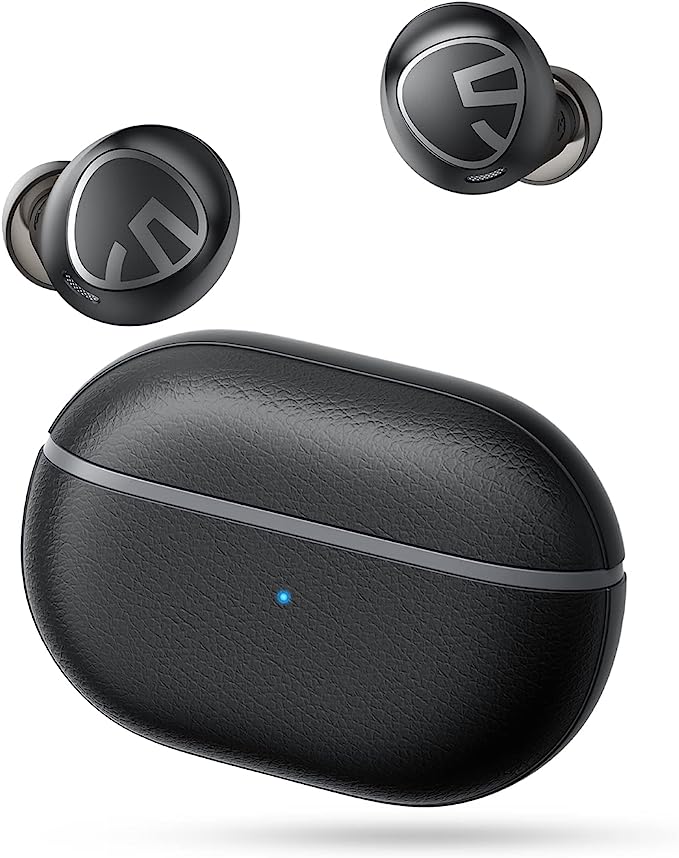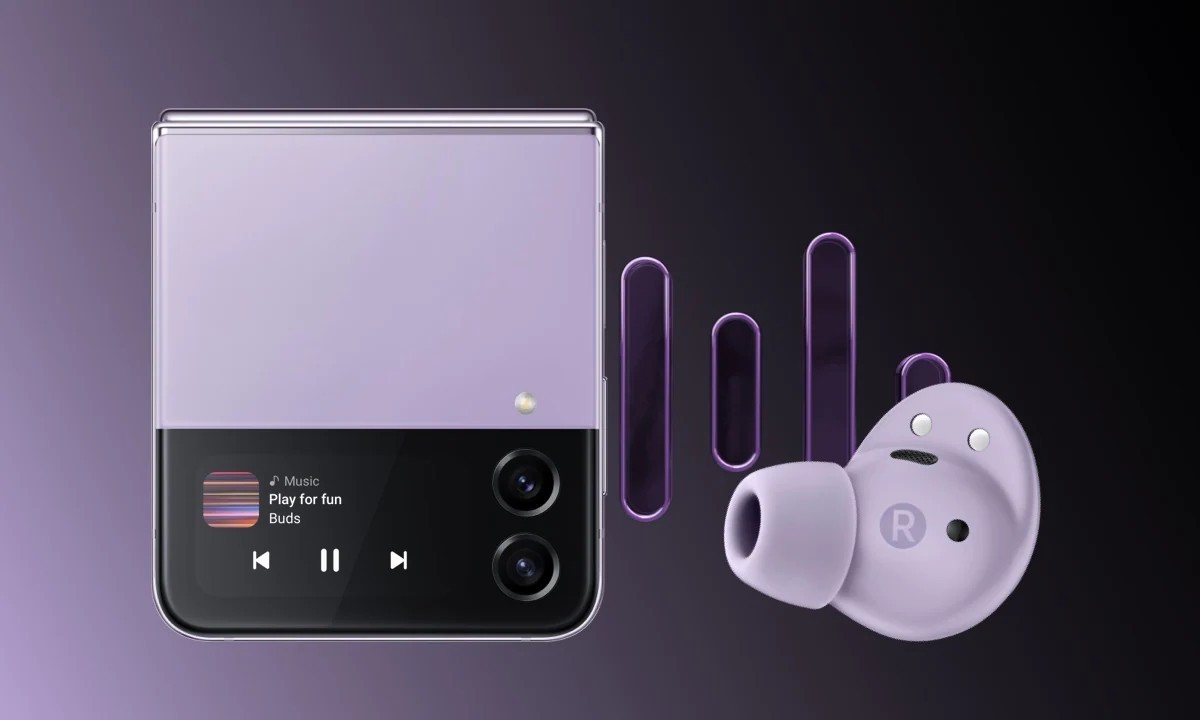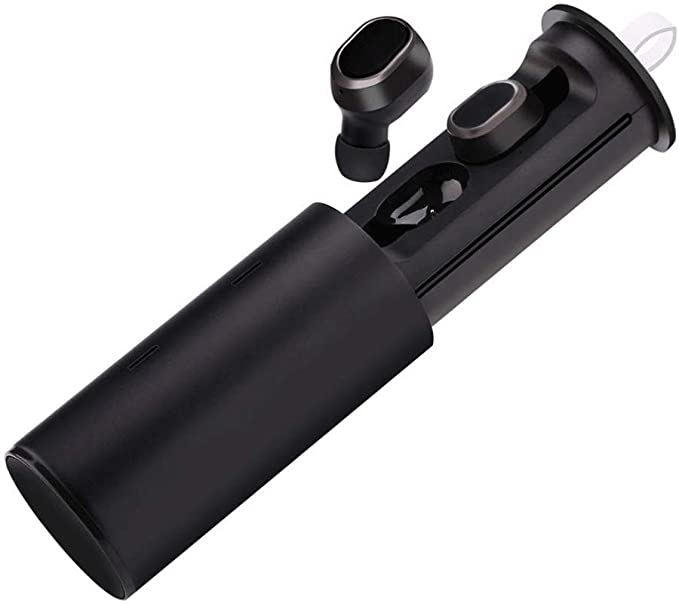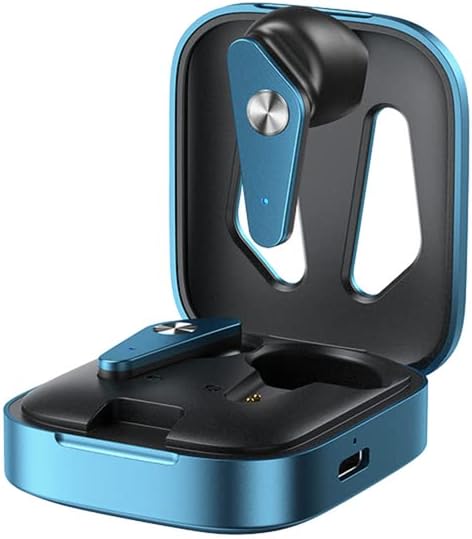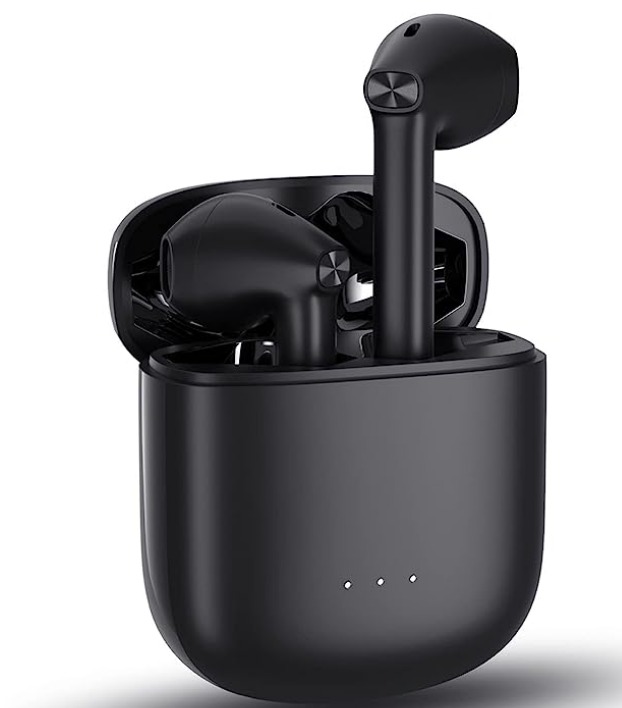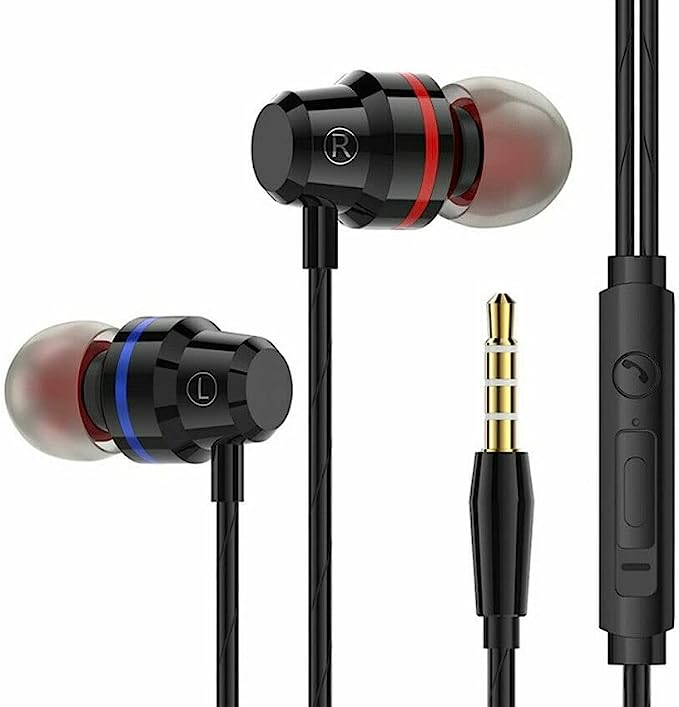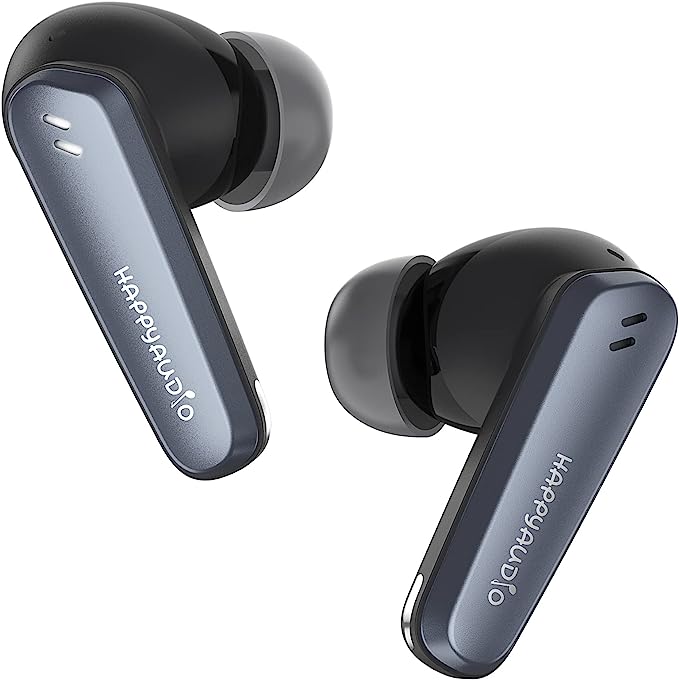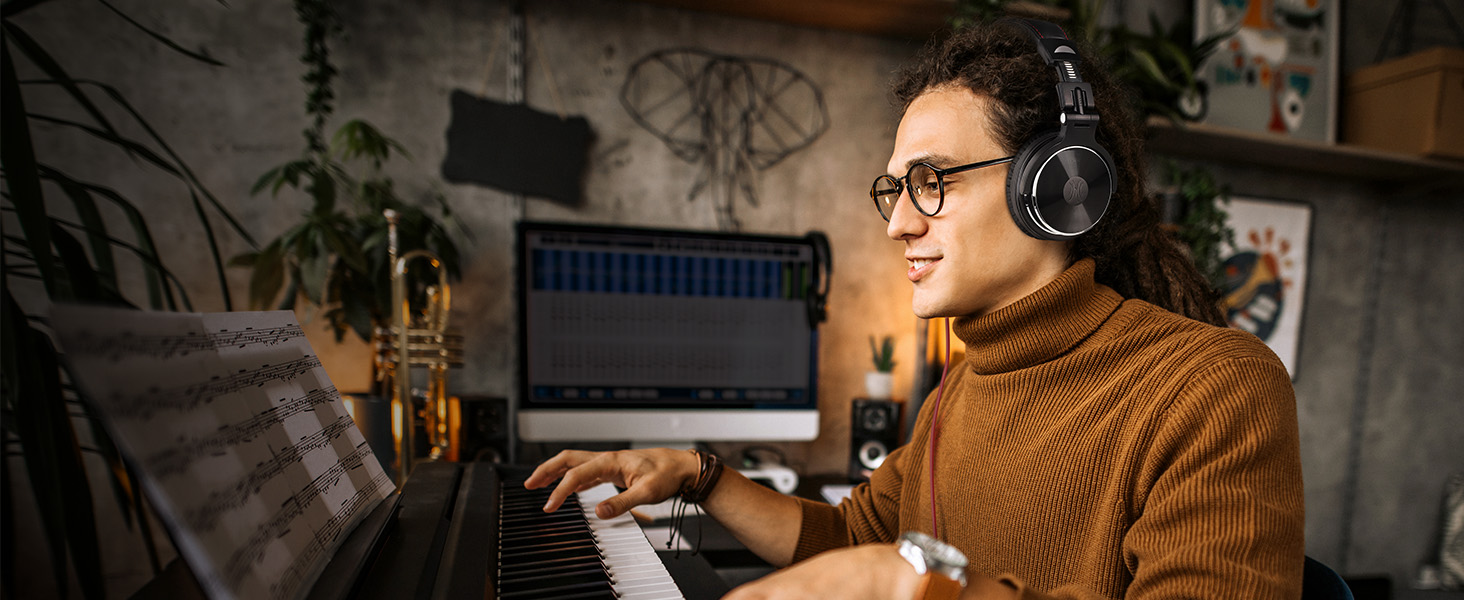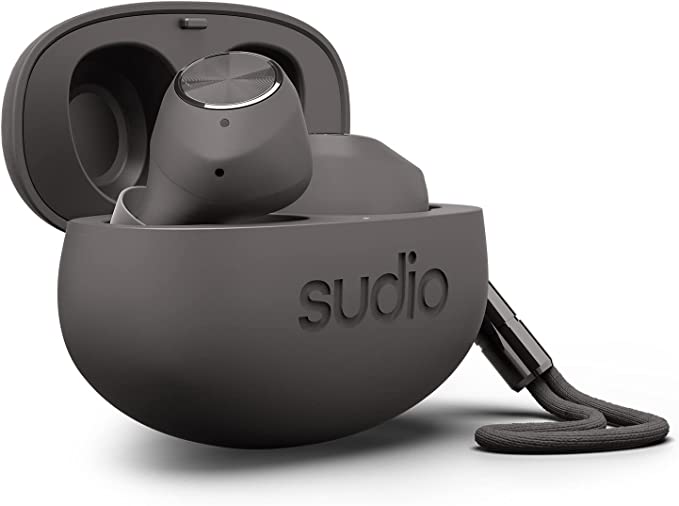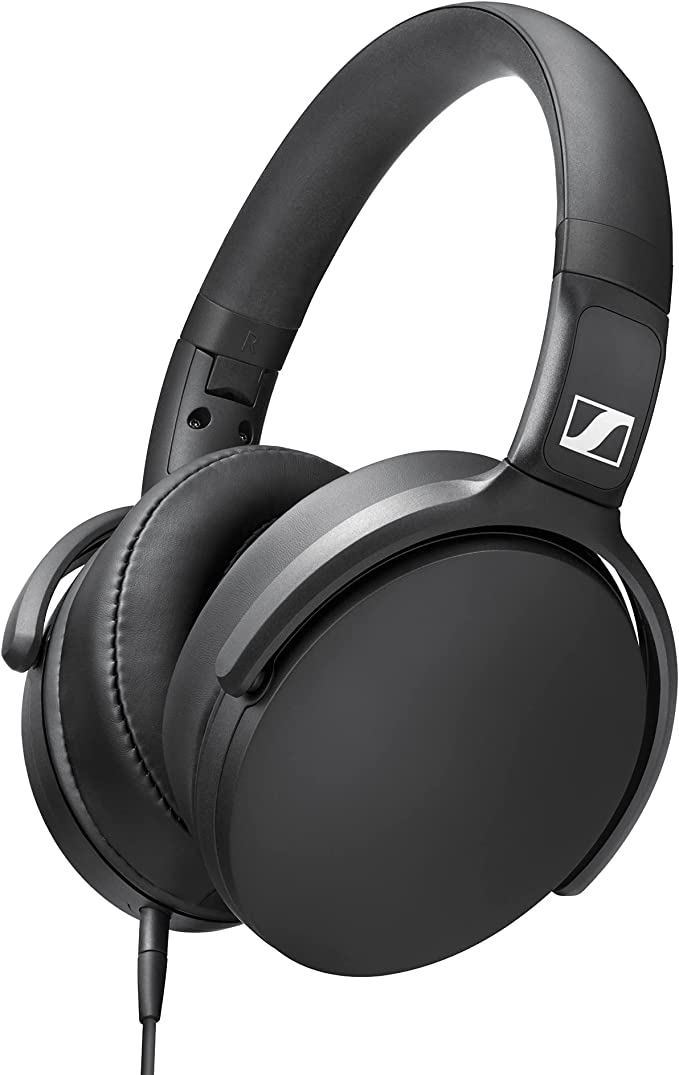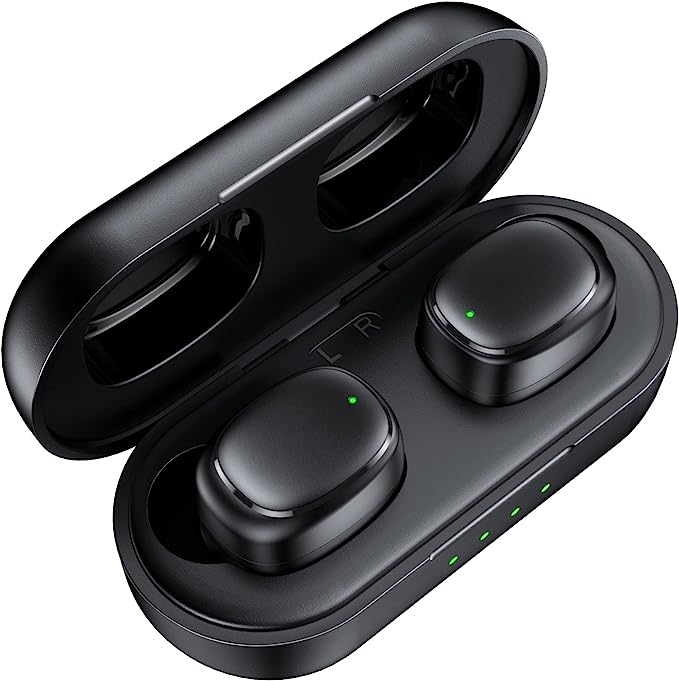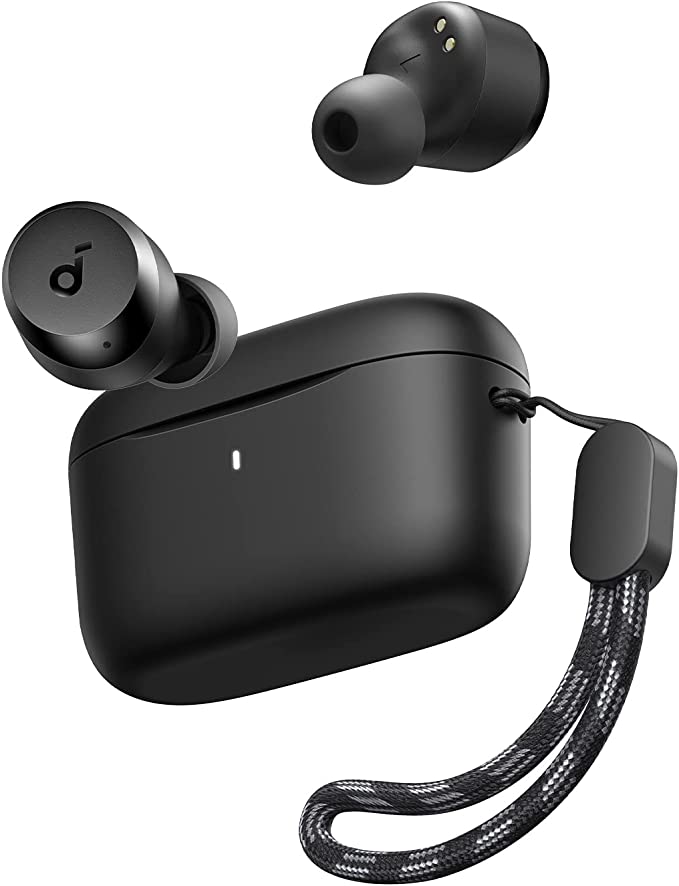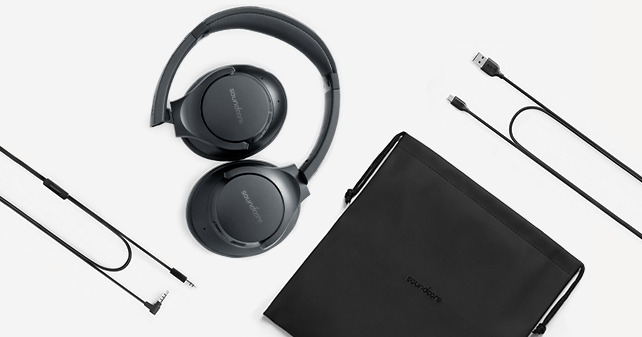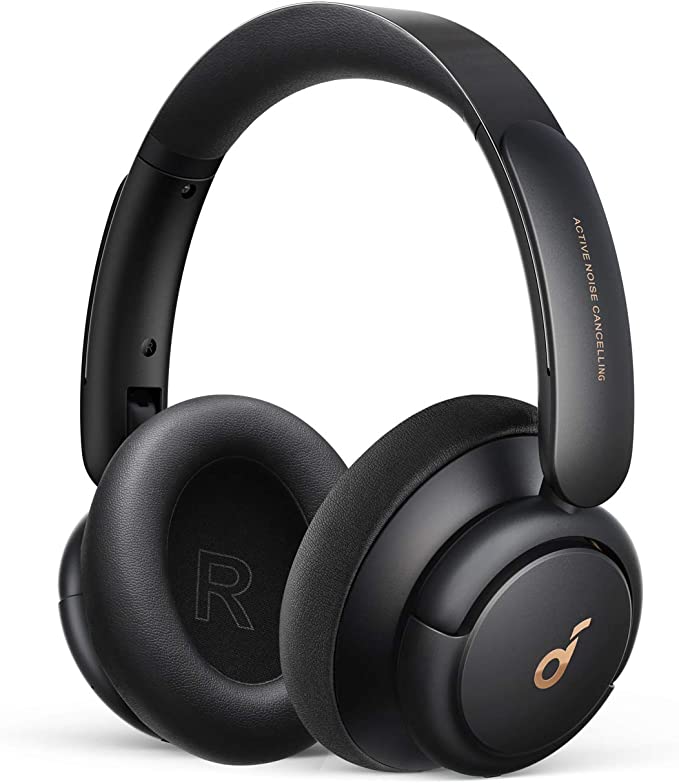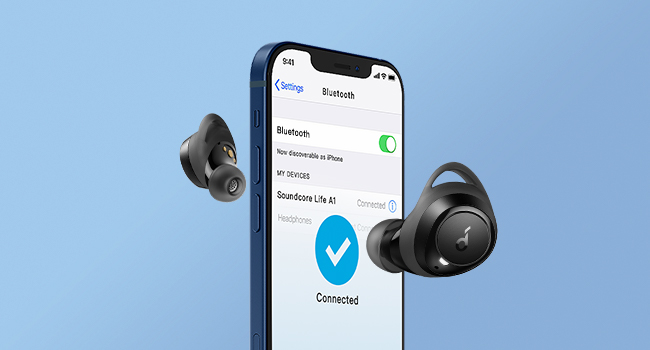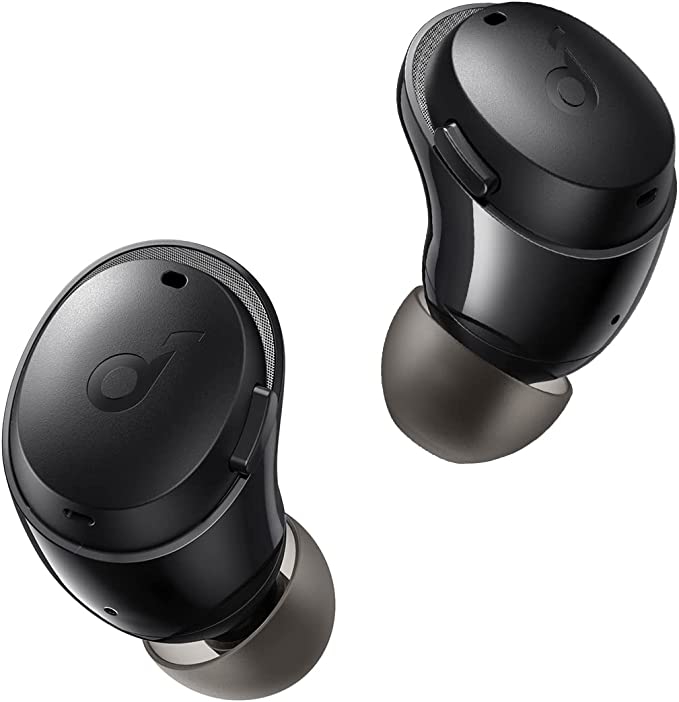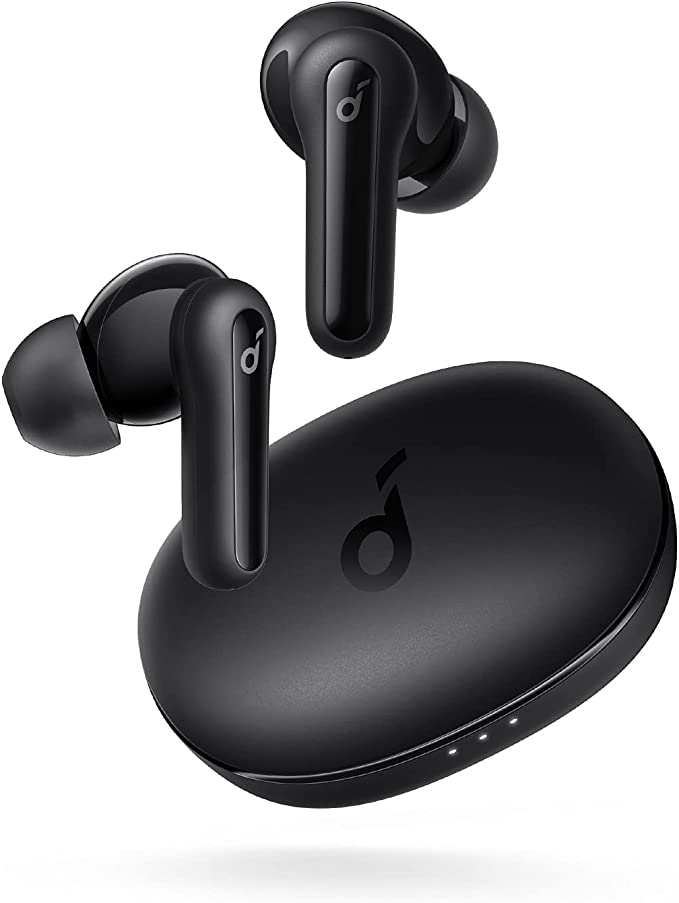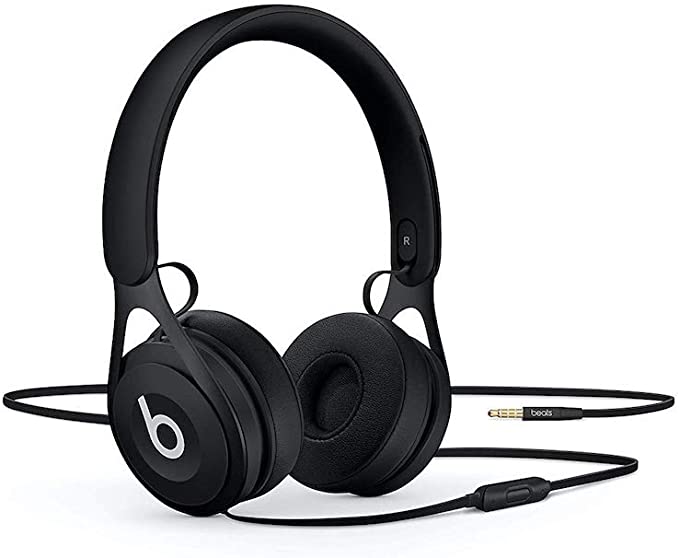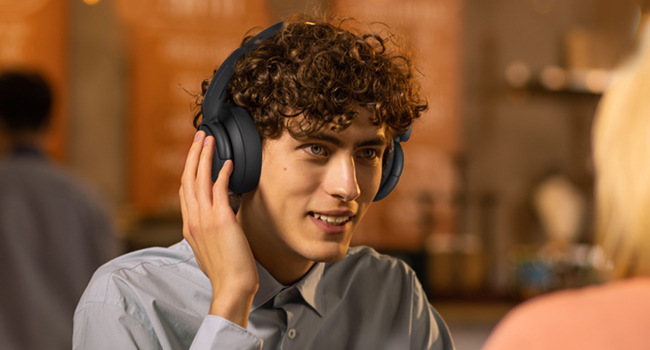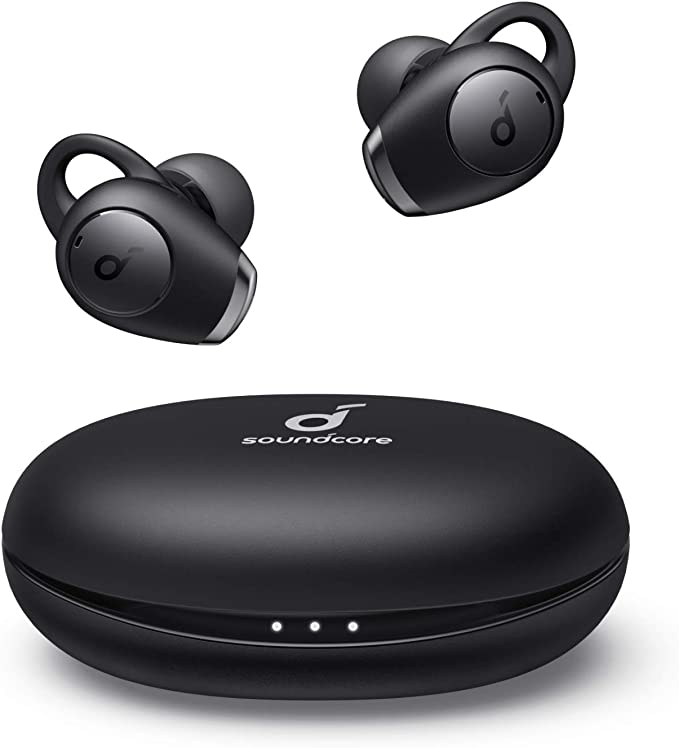Soundcore A20i True Wireless Earbuds: Long-Lasting Audio on a Budget
Update on July 4, 2025, 5:09 p.m.
The train lurches, a groan of metal on metal, swallowed by the cacophony of a city waking up. A dozen conversations bleed into one another, the hiss of the doors punctuates a baby’s cry, and a street performer’s muffled saxophone leaks in from the platform. It’s a tidal wave of noise. Yet, in the corner, a young woman sits perfectly still, a soft smile on her face, her head nodding to a rhythm only she can hear. She is in her own world, an invisible, impenetrable bubble of sound.
This scene is so ordinary it’s almost mundane. We see it every day. But when did this personal peace, this profound control over our own auditory space, become so commonplace? When did the technology to create such a sanctuary become so accessible that it fits into the smallest of pockets and budgets? The answer lies within tiny devices like the Soundcore A20i True Wireless Earbuds, which serve not just as gadgets, but as capsules of history and condensed marvels of science.

The King’s Tooth: A Surprising Pact of Connection
To understand the stable, invisible thread connecting those earbuds to a phone, we must travel back more than a thousand years to the age of Vikings. There lived a king, Harald Gormsson, famed for uniting the feuding tribes of Denmark and Norway. His curious nickname, Blåtand—or Bluetooth—is rumored to have come from a dead tooth that was a dark blue-grey. In the 1990s, when engineers from Intel, Ericsson, and Nokia sought a name for their new universal standard to unite disparate devices like phones and computers, they chose “Bluetooth” to honor the ancient king who united his people.
That act of unification is the very soul of the technology. The Bluetooth 5.3 standard used in the A20i is the modern-day embodiment of Harald’s diplomacy. It operates in the incredibly crowded 2.4 GHz radio frequency band—the same digital space occupied by Wi-Fi routers, microwaves, and countless other devices. To avoid chaos, Bluetooth performs a dazzling dance called Frequency-Hopping Spread Spectrum.
Imagine a crowded ballroom where everyone is trying to talk. Instead of shouting over each other, a pair of Bluetooth devices agrees to have a private conversation by rapidly hopping between 79 different “rooms” or channels, changing rooms up to 1,600 times per second. This constant, synchronized hopping makes the connection incredibly robust and resistant to interference. For the person on the train, this translates into a seamless experience: the music doesn’t stutter when someone walks by, and the earbuds connect to her phone the instant she takes them from their case. It’s a silent, flawless pact, brokered by the spirit of a Viking king.

The Alchemist’s Console, Shrunk to Your Fingertips
The rhythm that has her nodding is rich and full, the bassline a palpable thrum she can feel in her chest. This isn’t just luck; it’s a choice. She has sculpted the sound to her exact liking, an act that was once the exclusive domain of music producers in studios filled with equipment worth more than a luxury car.
Picture a 1970s recording studio. Dominating the room is a mixing console, a sprawling landscape of knobs, faders, and meters. This was the laboratory where sound alchemists tweaked and transmuted raw audio into legendary albums. At the heart of this console was the equalizer, or EQ—a powerful tool for controlling the very texture of sound.
Think of audio as a dish, and EQ as your spice rack. It allows you to adjust the core “flavors” of the sound spectrum:
- The Bass (Lows): This is the salt and umami, the foundational richness that gives music its weight and warmth. A little more, and a pop song becomes a club anthem.
- The Mids: These are the main ingredients, where vocals and most instruments reside. Clarity here is crucial for understanding lyrics and melody.
- The Treble (Highs): This is the citrus and spice, the bright, sparkling frequencies of cymbals and hi-hats that add detail and airiness.
For decades, this level of control was out of reach for the average listener. But today, that entire alchemist’s console has been miniaturized into software. Through the Soundcore app, the A20i offers 22 preset “recipes,” from “BassUp” for those who crave that low-end punch, to “Podcast” mode which clarifies vocal frequencies. It transforms passive listening into an active, creative process. With a few taps, our commuter becomes her own producer, ensuring the music sounds exactly as she feels it should.

An Artificial Brain Whispering in Your Ear
A call comes through. She taps an earbud and her music fades. “Hey, I’m on the train, can you hear me?” she asks. On the other end, her voice is startlingly clear, the surrounding chaos of the subway reduced to a distant murmur. This isn’t just a better microphone; it’s a demonstration of an artificial brain mimicking one of our most remarkable neural abilities.
Scientists call it the “cocktail party effect.” It’s your brain’s incredible talent for focusing on a single conversation in a loud, crowded room, filtering out all other chatter and clatter. For years, engineers have strived to replicate this feat in electronics. The A20i approaches this with a clever two-pronged strategy: two microphones and an AI algorithm.
One microphone is aimed primarily at the user’s mouth, its main job to capture their voice. The other is oriented outwards, listening to the ambient noise of the world. Both streams of audio are fed into the earbuds’ tiny processor. There, the AI algorithm, which has been trained on thousands of hours of speech and noise, gets to work. It has learned to recognize the specific patterns and frequencies that constitute a human voice. Like a meticulous bouncer at an exclusive club, it identifies the user’s voice and lets it through the velvet rope. The chaotic sound waves of the train, the chatter, the saxophone—are all politely but firmly denied entry.
The result is a small miracle of computational audio. It’s a private line in a public space, an engineered silence that allows for clear communication against all odds. It is, in essence, a small, artificial brain whispering in your ear, helping you to be heard.

The Weight of Lightweight Tech
The train finally pulls into her station. As she steps out onto the platform and merges with the morning rush, she slips the tiny earbuds back into their case and the world’s noise rushes back in. The moment of personal peace is over, but its significance lingers.
Those lightweight pieces of plastic are heavier than they appear. They carry the weight of a Viking king’s legacy, the history of the recording studio, and the cutting edge of artificial intelligence research. The true triumph of the Soundcore A20i and products like it is not that they contain these incredible technologies. It is that they have made these technologies so affordable, so reliable, and so utterly effortless that we can forget they are even there. They simply become part of the quiet, invisible magic that makes modern life just a little bit better.

